Mohit Tater's Blog, page 36
June 30, 2025
Ultimate YouTube Growth Blueprint: From Zero Views to Viral Success

YouTube is no longer just a platform for sharing videos—it’s a powerful income-generating machine for creators across all niches. Whether you’re a beginner looking to earn your first dollar or a growing channel aiming to unlock new revenue streams, monetizing your content is a game-changing step in your YouTube growth journey.
This guide breaks down how to turn your channel into a profitable venture, covering ad revenue, sponsorships, smart tools, and creative strategies. If you’re serious about accelerating YouTube growth, start by planning your first 5–10 videos around low-competition, high-interest topics. Use tools like YouTube’s auto-suggest, Google Trends, or TubeBuddy. Don’t aim for perfection focus on consistency and real value.
True to the title “Ultimate YouTube Growth Blueprint: From Zero Views to Viral Success,” this article lays out 11 smart actionable strategies that can take your channel from a quiet start to widespread visibility.
11 Smart Strategies to Increase Views from Zero Views to Viral1. Optimize Every Video for Search (YouTube SEO)YouTube is the second most used search engine and plays a critical role in early-stage YouTube growth. Create titles that attract viewers and include keywords naturally. Instead of “My Trip to Bali,” go with “Bali Travel Vlog: Must-See Places for First-Time Visitors.”
A compelling video description (around 250 words), proper tags, and closed captions enhance discoverability. These fundamentals create strong SEO foundations to support long-term channel visibility and growth.
2. Nail the Thumbnail-Title ComboYour thumbnail and title are the first impression your video makes. They should be intriguing and establish what to expect. Thumbnails work well with high-contrast colors, expressive facial close-ups and big text. Keep it tidy don’t make the image muddy.
Combine that with a title that compels interest or promises value. Headlines that include questions, numbers, and power words (like “easy,” “ultimate,” or “mistakes to avoid”) fare particularly well. Example: “5 YouTube Mistakes Killing Your Views. This combination helps your content rise in search and recommendations, unlocking early growth momentum.
3. Leverage Watch Time with Strong Intros and HooksThe first 15 seconds of your video are crucial. Your opening is what keeps viewers watching or encourages them to click away. Set up the hook right away by explaining what they will receive from the video, or teasing a cool moment.
Organize your message to keep them engaged. Introduce pace, visual transitions and segment mini-hooks to ensure viewers remain tuned in. More watch time is one of the quality signals sent to the algorithm and create attention and boost watch time a proven tactic for sustainable YouTube growth.
4. Cross-Promote on Social Media and CommunitiesDon’t just rely on YouTube’s algorithm to do all the heavy lifting. Share your videos on networks you already belong to Instagram, Twitter, Facebook, and in niche but relevant online communities like Reddit, Quora, or specific Facebook Groups.
Be a part of conversations and add value instead of just putting up your links. By embedding yourself into conversations, you’ll earn trust and traffic organically, expanding your reach beyond YouTube itself.
5. Buy YouTube Views the Smart WayIf you’re just starting out on YouTube, one of the biggest challenges is getting your videos noticed. A helpful solution is using a trusted service like GetAFollower, which provides real YouTube views from genuine users. These views make your videos look more active and interesting to new viewers helping you get more clicks and better engagement.
When your videos look popular, YouTube is more likely to recommend them to others. That means more people discovering your channel naturally. Whether you’re trying to meet monetization rules or just want to grow faster, This gives you a smart, safe way to boost your visibility and attract a real audience from day one.
6. Post Consistently and Learn from DataConsistent content is the heartbeat of YouTube growth. Whether weekly or biweekly, choose a rhythm and stick to it. Regular uploads train your audience and the algorithm to expect more from you.
Check your stats on YouTube Studio to see how you did. You can begin by analyzing watch time, average view duration, traffic sources, and audience retention graphs to see what’s working. Use that information to make better videos in the future.
7. Engage with Your Audience to Build LoyaltyThe algorithm loves engagement. Encourage likes, comments, and shares within your videos. Ask questions, host polls, and respond to every comment early on. This not only increases interaction but also helps form a loyal community.
Consider ending your videos with a CTA like: “Let me know in the comments what topic you want me to cover next.” This keeps your audience interaction that helps you to became viral on youtube.
8. Build loyalty by interacting with your audienceThe algorithm thrives on engagement. Promote likes, comments, shares in your videos. Politely engage even with dissent, host polls and ask questions and answer every comment when your audience is small. Not only is this more interactive, but it also builds community loyalty.
Perhaps on your next video you could finish with a CTA that says something like: “Tell me what you want me to teach you next in the comments below!” This helps to keep your audience engaged and signed up for your content roadmap.
9. Collaborate to Tap into New AudiencesBusy title tags, starring tough men with heart and blowing stuff up 10. Strategic partnerships put your content before new eyeballs. Collab with people that have similar size audiences and niches that complement each other. It doesn’t always have to be co-creating a video; you could lend shout-outs, a mention in a channel or even make a cameo in livestreams.
10. Take Advantage of YouTube ShortsShort content is the future and with YouTube Shorts you have a huge potential to reach inorganic traffic. Brands new and old can go viral with Shorts. Repackage Your Content – with short vertical snippets (15 sec – 60 sec) out of your current content or original micro-content for mobile consumption on mobile apps, Add a teaser or CTA leading back to your main channel and boosting subscribers and views.
11. Focus on Long-Term Value and Evergreen ContentAlthough trends can provide sudden traffic boosts, evergreen content offers consistent or sustained returns. Think tutorials, how-to guides, beginner’s tips and common problem-solving videos.
These will still be driving views months or years from now. You build a channel that grows long-term as you have a good recipe of trending and evergreen content.
ConclusionConsistent content is the heartbeat of YouTube growth. Whether weekly or biweekly, choose a rhythm and stick to it. Regular uploads train your audience and the algorithm to expect more from you.
This blueprint is your roadmap. Follow it with focus and consistency, and you’ll build a YouTube channel that doesn’t just grow it thrives.
The post Ultimate YouTube Growth Blueprint: From Zero Views to Viral Success appeared first on Entrepreneurship Life.
Why Startups Should Prioritize Branding from Day One

In the fast-paced startup ecosystem, most founders are laser-focused on product development, funding, and market entry. While these aspects are undeniably crucial, one element often overlooked in the early stages is branding. Yet, successful startups like Airbnb, Slack, and Notion didn’t just thrive on innovation—they stood out because of consistent, strong, and human-centered brands.
If you’re launching a startup, investing in branding early on can make a tangible difference in your growth trajectory, customer trust, and market positioning. Here’s why branding should be at the heart of your startup journey—and how to do it right.
The Role of Branding in a Startup’s SuccessBranding is not just a logo or a tagline—it’s the total experience you create for your customers. It includes your tone of voice, visuals, mission, and even the way your team communicates. When done correctly, it builds trust, emotional connection, and recognition in a crowded market.
Startups, by nature, are trying to disrupt or innovate within existing spaces. Without a strong brand foundation, it’s easy to get lost among more established competitors or appear unreliable. A strong brand communicates confidence and clarity, which are essential when you’re asking users to try something new.
Why Now? The Case for Early BrandingDifferentiation in a Saturated MarketStartups are often competing against both industry giants and other nimble innovators. Branding gives you the power to stand out by clearly articulating your unique value proposition.Build Trust Before You Scale
Trust takes time to build, but an authentic and consistent brand accelerates the process. In a digital world where users evaluate your brand within seconds, first impressions matter.Attract the Right Investors and Talent
Investors are not just betting on your product—they’re betting on your story. A strong brand gives them confidence in your long-term vision. Similarly, top talent wants to work with startups they can believe in.Consistency Across Touchpoints
From social media to customer service emails, branding ensures that your startup communicates consistently. This fosters familiarity and professionalism, even in early days.How to Build a Startup Brand That Lasts
While the idea of branding may feel overwhelming, especially with limited resources, a strategic and intentional approach can go a long way.
1. Define Your Brand StrategyBefore you jump into visuals, it’s important to define the foundation of your brand. This includes:
Your mission and valuesYour target audienceYour tone of voiceYour brand promisePositioning in the marketPartnering with a brand strategy agency at this stage can help you identify your unique voice and craft messaging that resonates with your audience. Agencies bring experience in researching your competitive landscape, understanding customer psychology, and developing frameworks that guide long-term growth.
2. Create a Visual IdentityOnce the strategy is in place, visual elements like your logo, color palette, typography, and design assets can be developed. These elements help make your startup instantly recognizable. Keep in mind that visual identity should be scalable—what looks good now should still represent your brand as you grow.
3. Develop Brand GuidelinesYour brand should be consistent, whether it’s a tweet, a pitch deck, or product packaging. Creating a brand guide ensures your entire team (and future hires) understands how to use logos, fonts, colors, tone, and messaging.
4. Focus on StorytellingCustomers connect with stories more than features. A compelling origin story, founder journey, or problem-solving narrative builds emotional engagement. Use content, PR, and social media to amplify your story in authentic ways.
When to Seek Professional SupportNot all startups have the in-house resources to manage branding effectively. That’s where partnering with a branding agency for startups can be transformative. These agencies specialize in guiding early-stage companies through everything from naming and messaging to logo design and brand launch strategies. They understand startup constraints and tailor their process to be agile, affordable, and growth-focused.
Final ThoughtsBranding is not a luxury reserved for established companies. For startups, it is a powerful business tool that influences perception, trust, and value. By investing in your brand early—through strategy, storytelling, and design—you lay the groundwork for a business that people remember and believe in.
In a landscape where attention spans are short and competition is fierce, your brand is your biggest asset. Make it count from day one.
The post Why Startups Should Prioritize Branding from Day One appeared first on Entrepreneurship Life.
ClickFunnels vs Shopify — Which One is Better for Ecommerce?
Starting an online business always sounds exciting in theory—freedom, flexibility, and potential income from anywhere in the world. But once the first hurdle comes up—choosing the right platform to build your store—it’s easy to get overwhelmed. That’s where the comparison of ClickFunnels vs. Shopify comes into play. Both tools are potent, but they serve very different purposes.
Understanding the difference is crucial. Many people pick the wrong tool because they don’t realize these platforms cater to different business models. This isn’t just a matter of features and pricing—it’s about which one fits your vision of how you want to sell online.
ClickFunnels Overview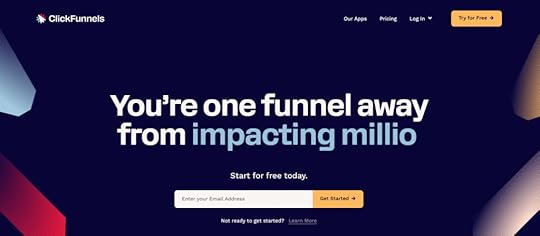
ClickFunnels is a tool mainly used for building sales funnels—step-by-step pages that guide a visitor toward buying something. Think of it like a digital salesperson that walks people through a process: showing them a product, collecting their email, offering discounts or upsells, and finally helping them complete a purchase. It’s great for marketers, coaches, or anyone who sells services or digital products online. You don’t need to know how to code—ClickFunnels gives you drag-and-drop tools to set it all up.
Best for: Selling digital products, online courses, or services with a strong focus on lead generation and marketing automation.
Shopify Overview
Shopify is a platform for building an online store. If you want to sell physical products—like clothes, gadgets, or handmade items—Shopify is one of the easiest ways to create a professional-looking website. It helps you manage inventory, accept payments, track orders, and even connect with shipping services. Like ClickFunnels, it’s beginner-friendly with lots of ready-made themes, but it’s built more for managing a traditional e-commerce business.
Best for: Creating and running an online store with physical or digital products, including inventory, shipping, and payments.
Also Read – Enterprise vs Entrepreneurship: Which Path Leads to Success?
ClickFunnels vs Shopify: Factors To Compare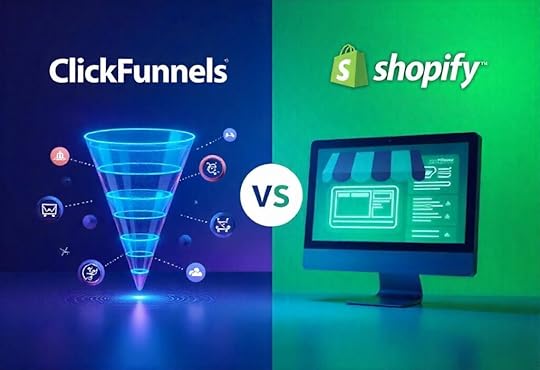 The First Step: What Are You Building?
The First Step: What Are You Building?Before comparing features, it’s essential to ask: What kind of business are you building?
Some people want a full online store where customers can browse multiple products, check prices, read descriptions, and even come back later to shop again. That’s the traditional e-commerce model, and Shopify is tailor-made for this setup. It’s a platform built for showcasing products, managing inventory, collecting payments, and handling shipping.
Others, however, aren’t trying to build a store. Instead, they have one or two offers they want to sell aggressively, perhaps through a landing page, email list, or online ad campaign. These are typically businesses focused on conversion, lead generation, and upselling. ClickFunnels is the better fit for this kind of strategy.
So before even logging into either tool, the first significant realization is this: one platform is a digital storefront (Shopify), and the other is a digital salesperson (ClickFunnels).
The Setup Process: First Impressions MatterWhen building an online presence, ease of setup makes a huge difference.
Shopify makes it incredibly easy to get started. You pick a theme, customize the colors and fonts, upload product images, and enter your product details. It’s like filling out a form—you’re guided step by step. You can have a professional-looking store up and running in a single afternoon, even without technical experience.
ClickFunnels takes a different approach. Instead of creating a store, you’re building a funnel—a web page sequence that guides the visitor toward a specific action, usually a purchase. You start with a landing page, then a sales page, maybe an upsell page, and finally, a checkout page. It’s all laid out logically, but it requires a bit more marketing know-how to use effectively.
So, if you want a fast, user-friendly store setup, Shopify wins that round. But if you’re focused on crafting a tightly controlled buyer journey, ClickFunnels becomes the obvious choice.
Design Freedom: Store vs Sales PageA visually appealing store builds trust. When it comes to design options, both platforms shine—but in very different ways.
Shopify offers dozens of beautifully designed themes, many of which are free. These themes are built for e-commerce and include features like product carousels, mobile responsiveness, customer reviews, and clean navigation. Most adjustments—like changing colors or repositioning elements—can be done without any coding.
ClickFunnels provides a powerful drag-and-drop editor, giving you complete control over your funnel’s design. You can move things around exactly how you want, add countdown timers, embed videos, or insert lead capture forms. But there’s a catch—it’s easy to overcomplicate things and get stuck tweaking layouts instead of focusing on sales copy.
So, in the ClickFunnels vs. Shopify design debate, Shopify is best for polished, product-focused storefronts, while ClickFunnels is ideal for conversion-optimized pages with marketing elements built in.
Also Read: Blogger VS. Vlogger: Which One Makes You More Money?
Features That Drive SalesThis is where the real comparison gets interesting.
Shopify is rich in features for running an online store. You can manage hundreds of products, track inventory, set up collections and categories, and even offer discount codes or abandoned cart emails. It’s perfect for ongoing sales and long-term customer relationships. You also get access to apps for everything from email marketing to loyalty programs and live chat support.
ClickFunnels, on the other hand, is hyper-focused on increasing conversions. Funnels aren’t just a sequence of pages—they’re engineered sales paths. To boost the average order value, you can create upsell offers, down-sell alternatives, and limited-time deals. It’s also powerful at lead generation and email capture, often converting far better than traditional product pages.
The big difference is that Shopify is optimized for browsing, while ClickFunnels is optimized for selling.
Product Management: Catalog vs FunnelManaging your products depends heavily on the business model you’re pursuing.
Shopify handles product catalogs beautifully. If you plan to sell five, fifty, or five hundred different items, Shopify can manage them all efficiently. It allows for multiple product variants (like sizes or colors), custom SKUs, shipping rates, and digital downloads.
ClickFunnels, in contrast, isn’t built for a full catalog. It works best with one or a few products that you want to highlight and promote strongly. While you can technically create product collections using third-party tools or integrations, that’s not its strength.
Shopify is built for growth if you’re planning a business that will eventually offer many products. But if you’re running a single-product campaign or focusing on high-ticket offers, ClickFunnels is more streamlined and effective.
Payments and Checkout: The Final StepA great product and beautiful design won’t matter if customers can’t check out easily.
Shopify offers one of the smoothest checkout experiences in the e-commerce world. It supports multiple payment gateways (Shopify Payments, PayPal, Apple Pay, Stripe), shipping options, taxes, tipping, and international currencies. Customers can save their info for faster checkouts in the future. Everything is optimized for trust and simplicity.
ClickFunnels handles checkout differently. It allows you to integrate Stripe or PayPal for payments and offers upsells and order bumps within the checkout process—something Shopify doesn’t do natively. However, it doesn’t support as many global currencies or shipping options out of the box. You’ll likely need additional tools to handle more complex logistics.
In summary, Shopify wins in versatility and polish, while ClickFunnels wins in strategic upsells and maximizing the moment of purchase.
Also Read: Firefox Vs. Chrome: Advantages and Disadvantages
Traffic, SEO, and MarketingThis is a significant difference between the two platforms that often gets overlooked.
Shopify is built for long-term growth. It has built-in SEO tools that optimize product pages, collections, and blog posts. Your store can show up in Google searches, helping attract organic traffic. You can also integrate your store with Google Shopping, Facebook, Instagram, and more. If you’re playing the long game, Shopify is an excellent foundation.
ClickFunnels isn’t focused on SEO—it’s designed for paid traffic. Most users build funnels and drive traffic through Facebook Ads, Google Ads, or email campaigns. It does offer email marketing tools, list segmentation, and autoresponders, but you’re expected to bring in visitors, not rely on search engines.
So, if your marketing strategy involves content, SEO, and brand building—Shopify is the better platform. But if you’re running ad campaigns with landing pages designed to convert cold traffic, ClickFunnels offers a more targeted solution.
App Ecosystem: Extensions and GrowthOne of Shopify’s most significant advantages is its massive App Store. It offers thousands of tools and extensions—most just a click away. Whether you need dropshipping, print-on-demand, customer reviews, retargeting ads, or analytics, you’ll find what you need in Shopify’s ecosystem. These apps allow businesses to grow quickly and adapt to new challenges.
While ClickFunnels’ integrations are more limited, it focuses on tools that enhance funnel performance. There are apps for webinar hosting, email automation, membership sites, and affiliate marketing. These are designed to help entrepreneurs scale offers rather than stores.
Both platforms are expandable, but Shopify is built to support long-term e-commerce business growth, while ClickFunnels is built to amplify single-offer marketing campaigns.
Pricing and ValuePricing always matters—especially when you’re starting.
Shopify’s basic plan starts at around $39/month, and higher-tier plans unlock advanced reports, staff accounts, and lower transaction fees. However, some themes and apps come with extra costs, and if you use a third-party payment provider, you’ll pay transaction fees.
ClickFunnels is more expensive out of the gate. The lowest plan starts at around $147/month, with more advanced features (like affiliate management or email automation) included in higher tiers. But consider this: ClickFunnels includes tools you’d otherwise have to pay separately—like email marketing software, page builders, and split testing.
So, while ClickFunnels costs more upfront, it may replace several tools that Shopify users pay for individually. It’s not about which is cheaper—it’s about which gives you the most value based on how you sell.
The Best of Both WorldsHere’s a secret that many experienced entrepreneurs learn: you don’t always have to choose.
It’s possible to use both platforms together.
You can build a beautiful, scalable store on Shopify—listing all your products, managing customer data, and handling shipping. Then, when you want to run a special campaign or launch a new product, use ClickFunnels to build a powerful sales funnel and drive traffic to it via ads or email.
This hybrid approach gives you the best of both worlds. Shopify takes care of the long-term foundation, while ClickFunnels handles the short-term bursts of high-intensity selling.
Final Verdict: Which Should You Choose?So, which is ClickFunnels vs Shopify better for e-commerce?
It all comes down to your business model:
If you’re building a full-fledged store with multiple products, aiming for long-term SEO growth, and wanting a polished brand experience, Shopify is the clear winner.If you’re launching a single product, want to run aggressive marketing campaigns, and care more about conversion optimization than product catalogs—ClickFunnels is the better tool.The decision isn’t about which platform is superior. It’s about which aligns with your strategy, goals, and strengths.
Choose wisely—remember, the tool is only as powerful as the person using it.
The post ClickFunnels vs Shopify — Which One is Better for Ecommerce? appeared first on Entrepreneurship Life.
Top 10 Best YouTube to MP3 Converters in 2025
Even though we see so many visuals on our screens, audio is immersive. You may listen to your favorite speeches offline, save a music mix for your road trip, or listen to a podcast while you jog. All types of media can be found on YouTube, but extracting audio from videos can be time-consuming if you don’t have the right tools. Enter the YouTube to MP3 converter.
By 2025, more choices only meant more choices. Faster speeds, better quality, and more privacy features all contributed to a surplus of options for users. However, not all of them live up to their advertisements. Some are riddled with ads and junk, some have so much compression they make your listening experience a nightmare, some contain malware, and others are not secure or reliable. How do you determine which YouTube MP3 converter is worth your time or safety?
Out of dozens of available tools, these ten YouTube to MP3 converters stand out as the best in 2025. This list includes a converter for casual users and serious audio collectors alike. Let’s look more at what distinguishes each converter from the competition.
4K YouTube to MP3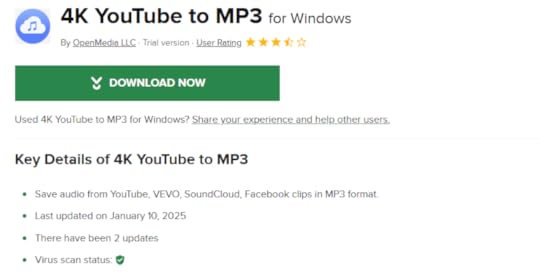
4K YouTube to MP3 should be your top priority if you want a neat, well-designed, high-quality solution. It consistently provides high-quality audio and supports various file types, such as MP3, M4A, and OGG. It functions well with Linux, Mac, and Windows and has a simple UI.
Why it stands out:
No pop-ups or advertisementsYou can download whole channels or playlists using it.High-quality 320kbps MP3 is supported.Compatible with various sites, such as SoundCloud and VimeoThis application makes it quick and easy to download a music playlist or a collection of inspirational speeches. Additionally, it offers regular updates to keep up with modifications to the YouTube algorithm. With offline access just a click away, it’s a favorite among music lovers and content curators.
Also Read – MovPilot Review: Best Prime Video Downloader for Mac
YTMP3.cc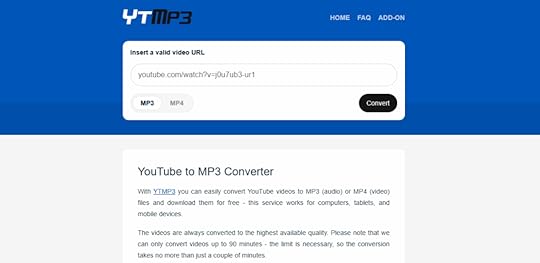
Sometimes, you want something simple that works in a snap. YTMP3.cc is a browser-based converter that requires no download or registration. Paste the YouTube URL, pick MP3 or MP4, and hit download.
Why users love it:
Free and easy to useNo software neededConverts videos under 90 minutesQuick conversion processYTMP3.cc is excellent for those who want immediate results without downloading software. It is designed for mobile use (it is great on a phone) and is functional on a desktop, too. It does not have advanced features, but it is hard to beat for casual use.
SnapDownloader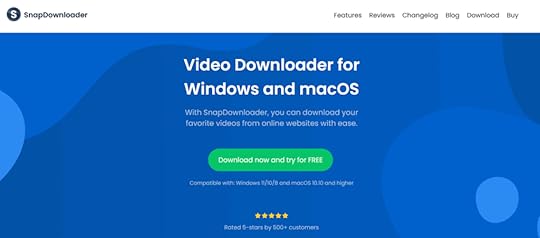
SnapDownloader is a powerful tool for people who desire more control over their downloads. In addition to YouTube, it supports more than 900 websites and has features like proxy settings, bulk downloads, and subtitle extraction.
Highlights:
Supports MP3, MP4, and moreBatch downloads save timeWorks with geo-restricted contentDownloads up to 8K video and extracts audioSnapDownloader features everything you need, whether you download frequently or want more freedom. The download manager facilitates effective file organization, and the UI is user-friendly. It’s beneficial for professionals or digital archivists who need powerful tools.
Also Read – Ssstik.io: Best TikTok Video Downloader
YT Saver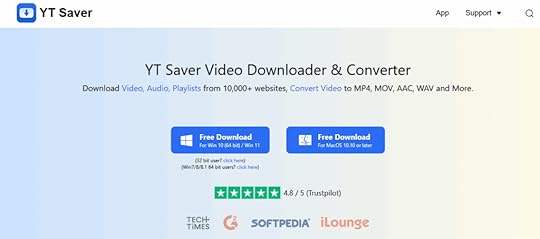
YT Saver is perfect for anyone who frequently saves lengthy content, such as lectures, interviews, or podcasts. It is dependable and doesn’t lag or crash even when watching videos that are ten hours long.
Key features:
Supports MP3, AAC, WAVBuilt-in private browserVideo locker for secure storageMore than 10,000 websites are supported.It is excellent for researchers, students, and podcast enthusiasts because of its robust capabilities and easy-to-use design. Additionally, it allows you to reduce audio to remove the necessary portions. This makes it a great pick for organized listeners who prefer managing their content offline.
MP3Studio YouTube Downloader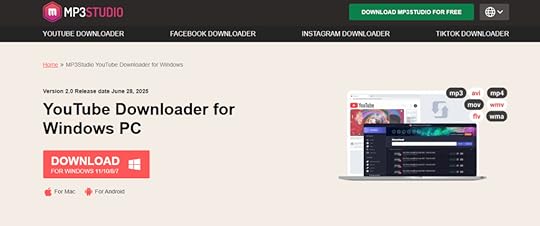
Speed, style, and substance come together in MP3Studio. This tool allows batch downloading, converts videos in seconds, and even includes an integrated YouTube search.
What makes it great:
Sleek designConverts up to 99 files at onceSupports 320kbps MP3Accessible on Android, Mac, and WindowsMP3Studio makes it quick and simple to download tracks for a party or create an offline playlist. The software even allows you to rename files and arrange them in folders. Its balance of aesthetics and performance sets it apart from many other converters.
Also Read: FastDl: Download Instagram Videos and More
OnlyMP3.net
OnlyMP3.net is a no-nonsense online converter. You don’t need to install anything or create an account. It works entirely from your browser and lets you save the file directly to Dropbox.
Why it’s handy:
No signup neededFast conversion and downloadCloud integrationClean, minimal interfaceThis is an excellent pick for occasional users who want one or two songs now and then without dealing with clutter. It also respects user privacy and does not track or store download history. It is quick, efficient, and reliable, perfect for light users.
ByClick Downloader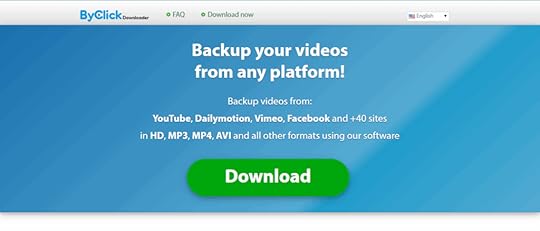
ByClick Downloader goes a step further by offering smart, automatic video detection. Every time a video plays in your browser, a popup window asking if you want to download it appears.
Best parts:
One-click downloadingSupports playlists and channelsConverts in 320kbps MP3Saves live videos and subtitlesThis tool is perfect for people who always discover new music or videos and want to save them effortlessly. It also offers scheduling features so you can set downloads for a later time. If automation is your thing, ByClick will quickly become your best friend.
Also Read: The Best Youtube Downloaders on Setapp
Y2Mate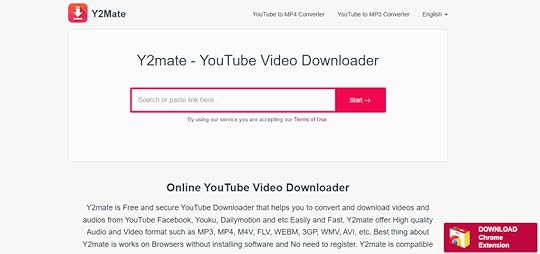
One of the most trustworthy online converters is still Y2Mate. It is compatible with YouTube, Facebook, and Dailymotion and supports a wide range of video formats.
Why it works:
Free and browser-basedConverts to MP3, MP4, M4V, and moreNo account requiredSimple and effective UIIf you prefer not to download an app and want something that works every time, Y2Mate is a top choice. Its servers are fast and rarely go down, which adds to the reliability. Plus, it has minimal ads compared to other free converters.
aTube Catcher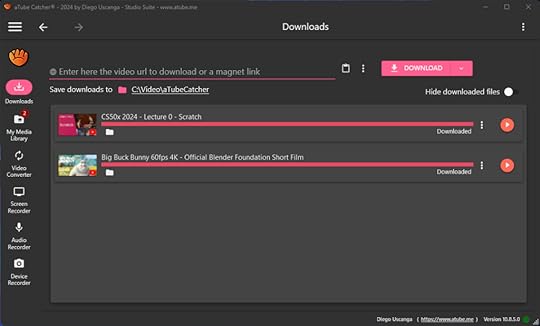
aTube Catcher is more than a converter; it’s a complete media toolkit. Alongside downloading audio, it can record your screen, burn DVDs, and convert files into a huge range of formats.
Why it’s powerful:
MP3, AAC, FLAC, and WMA supportScreen recording and DVD burningDownloads from various video sitesCustomizable conversion settingsExcellent for tech-savvy consumers looking for a single solution to meet their media requirements. Additionally, it provides interfaces in different languages, making it usable by people worldwide. It’s a media lover’s dream tool.
Also Read: TK2DL: A Platform to Download TikTok Videos Without Watermark
Freemake YouTube to MP3 Boom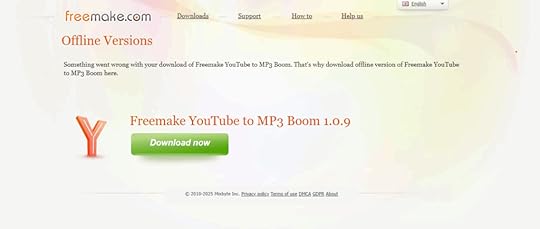
Freemake’s YouTube to MP3 Boom looks and feels more like a music player than a converter. You can search for videos directly inside the app and convert them without opening your browser.
Top features:
In-app YouTube searchDownloads entire playlistsHigh-speed performanceFun, colorful interfaceIf you enjoy finding new music and want an aesthetically pleasing experience, this application will make downloading less like labor and more enjoyable. Additionally, you can save time and storage by previewing music before downloading.
Choosing the Right Converter for YouEvery user has different needs. Some want speed, others care about quality, and some want a lightweight tool that won’t take up space. Here are a few quick pointers:
For speed: MP3Studio, YTMP3.cc, and Y2MateFor long videos: YT Saver and SnapDownloaderFor advanced features: aTube Catcher and SnapDownloaderFor simplicity: OnlyMP3.net and YTMP3.ccAlso, remember that not all YouTube content may be downloaded legally. Ensure you are responsible for utilizing these tools and always verify your country’s copyright regulations. Unauthorized downloads of copyrighted content might land you in legal hot water. These resources should only be used for educational or personal reasons.
Also Read – Imginn – Is It Safe To Use? (Instagram Video Downloader)
ConclusionWith so many great YouTube to MP3 converters in 2025, you don’t have to settle for low-quality downloads or shady websites. Whether downloading a single music track or archiving a library of educational content, there’s a tool here.
The best part? Most of these tools are free or have free trials with plenty of uses, so give them a shot.
The technology that drives converters has come a long way and is now easier to use! Not only are many advanced converters better, but they also offer new features such as bulk conversion, scheduled downloads (not unlike video streaming apps), and direct file download from cloud storage accounts to a local file. All of these processes are getting smoother and more efficient.
So go ahead and build your offline music collection, save those powerful and motivating talks, or take your favorite pieces of content with you wherever you go. With the right converter, this is only a few clicks away. There are tools, depending on personal or commercial use (2025 will have options from easy and simple to power-user).
The post Top 10 Best YouTube to MP3 Converters in 2025 appeared first on Entrepreneurship Life.
June 27, 2025
The Most Effective Ways to Make Income on the Side

The cost of living continues to rise, but salaries often fail to keep pace with it. Many families take on multiple jobs just to stay afloat, while others take them on just to pad their savings a bit more. Regardless of why you want some side income, there are plenty of options to choose from for all walks of life.
Pick Up a Freelance GigIf you have a particular skill set, you can freelance to pick up a few clients to work for outside of your main career gig. Platforms like Upwork, Fiverr, and LinkedIn can connect you to tons of clients looking for short-term contractors. Skills like writing, art, graphic design, web design, app development, software development, and more are in high demand. Craft a resume based on the role you’re looking for, and you’re more likely to get a few bites. You can make a ton of money in your free time with some freelance work.
House-Sit or Dog-SitWith pet-sitter apps like Rover, you can easily find clients who need someone to pet-sit for a weekend or two. If you enjoy animals, consider signing up to earn some extra income while caring for dogs or cats. You can invite pets into your home or head to the client’s home to care for them. If pets aren’t your thing, you can use other platforms strictly for house sitting. These clients will want someone to watch their home while they’re away. These are ideal gigs if you don’t mind spending time outside of your home or inviting a furry friend into your life temporarily.
Join Rideshare or Delivery AppsFood delivery apps are plentiful in modern times. Since the pandemic, people have become accustomed to the convenience of having food, groceries, or any purchase delivered to their doorstep. If delivering orders sounds appealing to you, joining platforms like DoorDash or Uber Eats can provide a significant income in your free time. You can also use programs like Lyft or Uber to transport people to their destinations. All you need is a reliable car. These apps do not employ you, so you can work whenever you like. Consider working peak hours in your area to earn a quick income.
Start TutoringIf you hold a degree or professional license in a subject, tutoring can provide you with easy access to paying clients. You can tutor kids and help with their homework, or sell classes to young professionals in your industry. Like other freelance gigs, you can network yourself as a tutor on professional platforms to gain more interest.
Rent Out Your HomeWhile you may not have the cash to purchase an entire rental property, you may be sitting on some extra space that you’re not using, which can easily be converted into rental income. If you have a spare room, a finished basement, an in-law suite, or even a vacation home, consider listing them as a rental option. Many people look for short-term or long-term rented rooms to save money. If you don’t mind sharing your home or property with someone, you can make a lot of money. If you prefer short-term rentals, consider apps like Airbnb or VRBO to make the process easier and more secure. Longer-term rentals will require more paperwork, so you’ll want to opt for property management software and list your rooms on platforms like Zillow. Renting out your space can be very lucrative in some cities where housing costs are high.
DenverIf you live in the Denver area, you’re likely aware that renting or buying a home can be quite expensive. The average home price is nearly $600,000, so providing an affordable room or home to rent can be a profitable venture for you, especially if you need help paying off your mortgage. Paying off your mortgage faster is a great idea, as you’ll pay less interest over time and you’ll get rid of mortgage insurance if you took on Denver FHA loans or similar programs with lower down payments.
San FranciscoIn the Bay Area, homeownership typically requires an average budget of $1.3 million to afford a home. Owning a house here might as well be a blank check for you. Consider generating rental income for tourists or young professionals looking to save money on rent.
New York CityLike the Bay Area, New York City is one of the hottest places to own real estate. In Manhattan, you’ve likely paid at least $1.2 million for your home. This city is one of the most popular places to live or visit, which can provide you with a steady stream of rental income on the side.
Plan a Garage SaleIf you have spare belongings in working condition, a garage sale can be a smart way to earn some extra bucks. Garage sales won’t provide steady income, but you’ll declutter your home as a bonus. Advertise the sale on local forums, such as Reddit, Nextdoor, and Facebook, to generate interest. Posting signs in your neighborhood or city is also a smart move. You can also sell your goods online to reach a wider audience. Selling homemade goods online is another option; opening an e-commerce shop on platforms like Etsy can help you earn money from your hobbies.
Increase Your InvestmentsIf you want to make more passive income, consider investing. High-yield savings accounts, index funds, and dividend stocks can give you extra income depending on how much you invest. Consult with a financial advisor to discuss your options and explore potential solutions. These options are often slower, but they’re relatively hands-free.
ConclusionDesiring to earn more income to support yourself or your family is a common goal. There are numerous options available to help your take-home pay go farther. Side gigs are more popular than ever, thanks to the rise of remote jobs and freelancing platforms. Rental income is also a safe way to generate some extra cash. Some even find a new business venture by starting a promising side gig.
The post The Most Effective Ways to Make Income on the Side appeared first on Entrepreneurship Life.
VPS Ping Check: Why It Matters More Than You Think

When it comes to certain occupations — think speed-sensitive Forex traders, developers building real-time apps, or even e-commerce operators setting up latency-sensitive tools — internet speed is not optional; it’s crucial. That’s where VPS Ping Check comes into play. Essentially, ping vps check is a quick way to find out how fast your server communicates with your forex broker or connected services. And in such time-sensitive affairs like trading? Even a few milliseconds delay can result in a missed trade.
Why You Should Bother with a Ping CheckRunning a vps checker is not so much about curiosity as about catching connection issues early on. It’s also easy, super quick, and saves you from nasty surprises in the future. Here’s why running a quick VPS ping check tool is a smart move:
Compare Servers Before Committing. Not all data centers are created equal. Before investing in a monthly or annual subscription, it’s best to check options from different preferred providers. The easiest way is to use the MyForexVPS tool: the platform offers a foolproof ping check, showing you latency to all major Forex brokers.Check Latency to Interactive Brokers/MetaTrader/other platforms. The lower the ping, the faster you can conduct your trades. Even a millisecond lag can make a huge difference between catching the right price and missing the deal altogether. Running a quick ping check is the best way to ensure you’ll end up with a great server. Spot Sketchy Network Issues. If you’re getting lag or your trading platform constantly disconnects, using a ping vps check is a must. Any sudden spike can indicate that something’s off.To wrap it up, running a ping test to check vps speed may feel like a small step, but it’s a crucial one, as it gives you a clear edge and allows you to skip platforms that offer subpar service. The end result? You run smooth and glitch-free sessions, with no deals missed due to laggy connection.
The post VPS Ping Check: Why It Matters More Than You Think appeared first on Entrepreneurship Life.
June 26, 2025
Motorcycle Accident Lawyer: Your Essential Guide to Legal Support After a Crash
Motorcycles are thrilling, fuel-efficient, and offer a sense of freedom unmatched by most other vehicles. However, they also come with inherent risks. Due to their open design and smaller size, motorcyclists are more vulnerable in the event of a crash. According to the National Highway Traffic Safety Administration (NHTSA), motorcyclists are nearly 28 times more likely to die in a crash compared to occupants of passenger cars. When a motorcycle accident occurs, the consequences can be life-altering—physically, emotionally, and financially. That’s where a motorcycle accident lawyer becomes indispensable.
In this article, we’ll explore what a motorcycle accident lawyer does, why their expertise is critical, how to choose the right attorney, and what steps you should take after an accident to protect your rights and secure the compensation you deserve.
What Is a Motorcycle Accident Lawyer?
A motorcycle accident lawyer is a legal professional who specializes in representing clients involved in motorcycle crashes. These attorneys possess deep knowledge of traffic laws, insurance policies, personal injury claims, and the unique challenges that motorcyclists face on the road.
Unlike general personal injury lawyers, a motorcycle accident attorney has specific experience in dealing with cases where motorcycle riders are often wrongly blamed or offered inadequate compensation due to biases and misunderstandings about motorcycling behavior.
What Lawyers Do for Clients: Inside the World of Legal Advocacy
Why You Need a Motorcycle Accident Lawyer1. Understanding the LawMotorcycle laws vary by state and can be complex. From helmet laws to lane-splitting rules, numerous legal aspects can affect your case. A specialized lawyer ensures that your case is built around a clear understanding of applicable laws.
2. Handling Insurance CompaniesInsurance adjusters may try to reduce or deny your claim. They may argue that you were at fault or that your injuries aren’t as serious as you claim. A motorcycle accident lawyer is familiar with these tactieffectively cs and can effectively counter them with evidence and sound legal arguments.
3. Calculating True CompensationIn a motorcycle accident, you might suffer serious injuries such as broken bones, traumatic brain injuries, or spinal damage. A lawyer helps calculate the true cost of your damages, which can include:
Medical billsLost wages
Pain and suffering
Property damage
Rehabilitation costs
Future medical expenses
4. Proving Liability
In many cases, proving who is at fault in a motorcycle accident is not straightforward. Your attorney will gather police reports, eyewitness testimony, accident reconstruction data, and medical records to prove liability and win your case.
When Can an Employment Lawyer Help in Business?
Common Causes of Motorcycle AccidentsUnderstanding the root causes of motorcycle accidents can help establish fault in a legal case. Common causes include:
Driver Negligence: Car and truck drivers often fail to check blind spots or yield the right of way.Speeding: Excessive speed reduces reaction time for all drivers.
Distracted Driving: Texting or using a phone while driving increases the risk of accidents.
Drunk Driving: Impaired drivers pose a major hazard to motorcyclists.
Road Hazards: Potholes, gravel pose a, wetgreater danger tocan be far more dangerous for motorcyclists.
Defective Motorcycle Parts: Sometimes, the accident is due to a mechanical failure or design flaw.
What To Do After a Motorcycle Accident
The steps you take immediately after a motorcycle crash can significantly impact the outcome of your case:
Seek Medical Attention: Even if injuries seem minor, always get checked by a healthcare professional.Call the Police: An official police report will serve as critical evidence.
Document the Scene: Take pictures, note weather conditions, and gather contact details of witnesses.
Avoid Admitting Fault: Anything you say can be used against you later.
Contact a Motorcycle Accident Lawyer: The sooner you involve legal counsel, the better your chances of securing fair compensation.
What You Need to Know Before Hiring a New Lawyer
What to Look for in a Motorcycle Accident LawyerNot all lawyers are created equal. When selecting a motorcycle accident attorney, keep the following in mind:
Experience: Choose someone who has handled many motorcycle accident cases successfully.Reputation: Check online reviews, ask for references, and look at client testimonials.
Communication Skills: Your lawyer should keep you informed and explain legal jargon in plain English.
Fee Structure: Most personal injury lawyers work on a contingency fee basis, meaning you pay only if they win your case.
Trial Experience: While most cases settle out of court, you want someone who’s comfortable going to trial if necessary.
Legal Process Timeline1. Initial Consultation
You discuss your case, provide documents, and the lawyer evaluates the merits of your claim.
2. InvestigationThe lawyer collects evidence such as medical records, police reports, and witness statements.
3. Filing a ClaimYour attorney will file a claim with the at-fault party’s insurance company or file a lawsuit in court.
4. NegotiationLawyers negotiate for a fair settlement. If the insurance company resists, the case may go to court.
5. TrialIf a settlement isn’t reached, the case proceeds to trial where a judge or jury will decide the outcome.
When Should A Business Consult A Lawyer
Common Challenges in Motorcycle Accident ClaimsBias Against Riders: Jurors and insurance companies may assume motorcyclists are reckless.Comparative Fault: In some states, if you are partially at fault, your compensation can be reduced proportionally.
Inadequate Coverage: The at-fault party may not have sufficient insurance to cover your losses.
A skilled lawyer knows how to tackle these issues head-on to protect your rights.
Average Settlement AmountsSettlements vary based on the severity of injuries, insurance limits, and who is at fault. On average:
Minor injuries: $10,000–$25,000Moderate injuries: $50,000–$200,000
Severe injuries or permanent disability: $500,000 or more
These figures are not guaranteed but give a general range of what you might expect.
Conclusion: Get the Legal Help You DeserveA motorcycle accident can be devastating, but you don’t have to face the aftermath alone. A motorcycle accident lawyer provides the legal expertise, negotiation skills, and emotional support you need to rebuild your life. From managing insurance claims to securing full compensation for your injuries, the right attorney will be your advocate every step of the way.
If you or someone you love has been involved in a motorcycle crash, don’t wait. Consult a qualified motorcycle accident lawyer today to protect your rights and secure the future you deserve.
The post Motorcycle Accident Lawyer: Your Essential Guide to Legal Support After a Crash appeared first on Entrepreneurship Life.
The New Blueprint for Starting a Business in 2025: Why Simplicity and Speed Matter More Than Ever
In a world where business moves at the speed of a click, traditional approaches to entrepreneurship are rapidly being replaced. The idea of endless paperwork, long approval cycles, and confusing bureaucracy no longer aligns with how people want to operate in 2025.
Today, founders expect to launch faster, leaner, and with fewer barriers. From streamlined business formation to online-first operations, the modern entrepreneur seeks tools and systems that let them focus more on innovation- and less on red tape. This shift has reshaped how we think about starting a business, creating a new blueprint centered on simplicity and speed.
The Evolving Face of EntrepreneurshipJust a decade ago, setting up a company meant navigating local laws, hiring legal help, and waiting weeks-or even months-to become operational. Now, a new generation of digital-first entrepreneurs is questioning the need for all that friction.
The rise of remote work, no-code platforms, and digital nomadism has redefined what business looks like. In this landscape, it’s not just possible but expected to create a company online with minimal cost and effort. This demand for frictionless entry has pushed service providers to rethink how they support early-stage businesses.
The Core Principles of the 2025 Business Launch ModelThe modern startup ecosystem is built around five key principles that allow anyone, from solo founders to micro-agencies get off the ground quickly:
1. Speed Over PerfectionEntrepreneurs aren’t waiting for perfect conditions. They want to move fast, test ideas, and adapt in real time. Tools that facilitate instant setup and quick pivots are essential.
2. Simplified ComplianceNavigating legal and tax requirements used to be a major hurdle. But in 2025, solutions that handle compliance in the background—often through automation-have become common.
3. Global AccessibilityBusiness is borderless. Founders can live in Bali, hire in Berlin, and sell in Boston. Incorporating online is a natural extension of that mindset.
4. Lean InfrastructureOffice space, full-time staff, and in-house tech teams are optional. Founders now lean on SaaS platforms and freelance networks, trimming the fat from day one.
5. Smart Tools That Do the Heavy LiftingInstead of juggling ten separate services, entrepreneurs look for all-in-one kits that provide everything they need-from domain names to legal entity formation one place.
Why Speed Matters More Than EverTime is currency in 2025. Product cycles are shorter, competition is fiercer, and first-mover advantage has never been more real. A slow start can mean missing an entire wave of opportunity.
This is why fast business setup is no longer a luxury-it’s a necessity. Founders want to go from concept to company in days, not weeks. And they’re demanding systems that make that possible, whether they’re exploring how to register an LLC for free or looking for tools to manage remote teams.
One of the most notable shifts is the way company registration itself is handled. Services offering have helped eliminate one of the most common bottlenecks for first-time founders.
Building a Business in One Afternoon: The New Normal?Imagine this: over a cup of coffee in the morning, you buy a domain name, register your business, and launch your first landing page-all before lunch. That’s not just possible in 2025; it’s typical.
Here’s how a streamlined startup launch might look today:
Checklist: Launching a Business in 2025Choose a Business NameCheck domain availability and social handles simultaneously.Register Your Business
Use a trusted platform that offers free company formation options.Secure Your Domain
Your web identity is as important as your legal one—grab it early.Launch a Basic Website
Use templates or no-code builders to go live quickly.Set Up Business Email & Branding Tools
Create credibility from day one.Connect Financial Tools
Open a digital business account, automate invoices, and track expenses.Begin Marketing
Start building an audience via social media, SEO, or a newsletter.
These steps can now be completed in hours, not weeks. Tools like the Business Starter Kit from Namecheap bring many of these elements under one roof, reducing decision fatigue and setup time.
Who Benefits Most from the New Startup Blueprint?The biggest winners in this new era are independent creators, freelancers turning into agencies, bootstrapped SaaS founders, and digital nomads.
They often operate with limited resources and need to start a business online for free or close to it. The traditional overhead of business creation doesn’t align with their goals or their timelines. That’s why fast, affordable, and flexible solutions have become foundational.
This approach also benefits:
Side-hustlers testing ideas before going full-timeRemote-first teams launching cross-border startupsYoung founders with limited capitalCreators monetizing audiences through small product launchesFree Company Formation: A Key EnablerThe rise of platforms that provide access to free company formation services has removed a major barrier to entry. What once required navigating legal systems and hiring consultants can now be done in a few clicks.
Rather than acting as gatekeepers, these services empower entrepreneurs to move forward without hesitation. They help eliminate the fear of the unknown and the costs that used to come with it.
This democratization of business creation is one of the most important trends of the decade. When combined with accessible domain registration, email setup, and basic web tools, the result is an unprecedented level of agility for first-time founders.
What to Watch for When You Create a Company OnlineWhile speed is a major advantage, it’s important to stay thoughtful. Rushing into incorporation without understanding your obligations can still lead to problems. Here are a few things to keep in mind:
Know your legal obligations (especially across borders)Choose the right business structure for your goalsEnsure digital privacy and compliance from day oneUnderstand renewal fees or optional services tied to “free” offersKeep branding and business naming consistentMost platforms that let you create a company online offer guidance or automation around these topics-but it’s still up to you to be informed.
Final Thoughts: The Age of Effortless EntrepreneurshipIn 2025, launching a business doesn’t require special connections, a legal background, or piles of paperwork. It requires an idea, an internet connection, and the right tools.
Founders no longer see company formation as a hurdle-they see it as the first signal that their idea is real. That shift in mindset is driving demand for services that let them move quickly and stay nimble.
The rise of free company formation, streamlined setup kits, and smarter online services reflects a larger trend: entrepreneurship is becoming more inclusive, accessible, and fast-paced than ever before.
The question isn’t “can I start a business?” anymore-it’s “how quickly can I get going?”
The post The New Blueprint for Starting a Business in 2025: Why Simplicity and Speed Matter More Than Ever appeared first on Entrepreneurship Life.
One Simple Way To Safeguard Your Income That Many Don’t Know About

When it comes to insurance, most people think about their home, car, phone, or even life. However, there is one policy that is often overlooked, and it definitely shouldn’t be. We are talking about income protection insurance. This policy is designed to protect one of the most important things in our lives. Without our income, we can’t cover our daily living expenses or support our loved ones. If you don’t have income protection insurance in Australia, it is something worth looking into.
Why Our Income Should be ProtectedOur income is something we spend most of our lives working on. It is the foundation of our entire existence. Losing it due to an accident or illness, even if temporarily, can have truly devastating consequences, causing us to be unable to cover our bills, mortgage, or the things we love.
How Income Protection Insurance Can HelpIncome protection insurance is designed to cover up to 70% of our monthly income if we are ever unable to work due to an accident, illness, or other medical issue. During difficult times, this kind of safety net allows us to keep on living our lives the way we are now.
Where to Get the Best Income Protection PoliciesIf you want to give yourself peace of mind with an income protection insurance policy, knowing what to look for in a provider is key. First of all, it is crucial to go with a reputable insurance provider. It is also essential to invest in a policy you can adjust. This will enable you to make adjustments to your policy as your circumstances change, ensuring it always meets your current needs. Additionally, ensure it has a clear and straightforward claims process, and you understand all of the terms and conditions.
The Flexibility of Income Protection InsuranceDue to a stringent regulatory framework, Australia tends to have some incredible options when it comes to income protection insurance. If you are taking out income protection insurance in Australia, the policy will be flexible, allowing you to choose your own coverage amount, waiting time, and length of coverage.
How Often Should We Review It?Like any insurance policy, income protection insurance should always be kept on top of. After all, it is designed to replace your current income. Whenever your income changes, it is essential to make the necessary adjustments to ensure your coverage amount is sufficient. Additionally, if your coverage amount isn’t at 70% and you have taken on new financial responsibility, it might be best to increase it.
What Are You Waiting For?Investing in income protection insurance is not a smart financial move – it is a necessary one. If you haven’t taken out a policy yet, we highly recommend browsing the market to find one as soon as possible. We never know when there might be a pause in our income, but we can prepare for it.
The post One Simple Way To Safeguard Your Income That Many Don’t Know About appeared first on Entrepreneurship Life.
How Vacation Rental Owners Can Use Social Media Growth Tactics to Boost Bookings

Nearly everyone is on social media these days. Whether we use it as a source of information and entertainment or as a way to connect and gain a following, we sometimes forget that social media platforms are two-way tools, offering means to both acquire knowledge and reach out to an audience. With social media having so much influence on everyone’s lives, it only makes sense to use this powerful tool to connect with prospective clients and generate rental bookings.
As a vacation rental manager, tapping into social media’s potential is a viable addition in your efforts to drive inquiries and increase visibility amid a sea of competitors. Leverage your online presence to boost vacation rental bookings with these social media growth tactics.
Define Your Ideal GuestBefore you can create content that drives bookings, you need to clearly identify your target audience. Are you trying to attract families looking for a summer getaway? Or do you want to reach out to digital nomads seeking long-term stays? Or how about couples planning a romantic weekend? From here, you need to consider how each of these groups responds to different messaging, imagery, and even platforms.
By honing in on your ideal guest profile, you can tailor your language, visuals, and posting schedule to match their social media habits. For example, Pinterest may be ideal for travel inspiration aimed at families, while Instagram might better serve younger travelers looking for aesthetically impactful destinations. Through booking histories and guest data from your vacation rental property management software, you can get the inside scoop on past guests’ preferences, average stay lengths, and seasonal patterns. Take stock of these insights to craft content that appeals to the people most likely to book again.
Promote the Experience, Not Just the PropertyWorking with social media to promote your property should not just be about posting a photo of a well-decorated living room, but highlighting the story behind it and everything else about the stay. Rather than just showing the physical features of your property, try to showcase the experience your guests can expect when they book with you.
Start by spotlighting nearby attractions like nature trails, farmers’ markets, or beach boardwalks. Eating out is a major part of most vacations, so don’t forget to feature local dining favorites in the area. Instead of composing disconnected individual posts, think of your content as a mini travel guide, one that builds genuine anticipation and excitement.
Make a Strong Impression with Optimized ProfilesWith social media, your profile serves as your storefront. Hence, a poorly filled-out bio or blurry photos can be the difference between a new follower (and future guest) and a missed opportunity. With that in mind, make sure you have a bio that clearly communicates what your property is, where it’s located, and how people can book. This way, social media users and potential guests can get helpful information about your property at a glance, encouraging inquiries that translate into rental bookings.
Ensuring that your profile has a consistent visual identity—by using the same logo, brand colors, and tone across platforms—helps build recognition and recall. Additionally, including a booking link and contact options makes it convenient for interested parties to reach out. You can use your vacation property rental software to make sure these details are sorted and up-to-date across all your channels.
Lastly, don’t forget to use the power of visuals to elevate your profile. Use professional, high-resolution photos and video tours that show your rental at its best, helping potential visitors visualize how they can enjoy these amenities during their stay.
Create a Content Plan That Works for YouEstablishing your online presence requires consistency and a well-planned content strategy. Stay consistent with a content calendar that helps you stay organized, timely, and on-brand. Give yourself enough time to produce quality content with a healthy mix of content types, from property features and last-minute deals, to itinerary suggestions and seasonal inspiration (e.g., “Fall Getaways” or “Winter Retreats”).
Strategic content planning also allows you to easily offer relevant content during key peak periods, keeping you from having to rush out a poor-quality post on holidays or school breaks. And while there’s no need to post daily, maintaining an active profile ensures visibility and keeps your property top-of-mind.
Build Relationships, Not Follower CountsGetting thousands of social media followers is well and good, but what matters most is how you connect with them. As a vacation rental owner or manager who handles your property’s online presence, you must recognize how social media works, and that is by rewarding engagement. And when it comes to tapping social media’s potential for building a client list, replying to every comment and message should be your goal, so make sure to promptly respond to questions about availability or amenities so you won’t miss potential bookings.
Moreover, don’t neglect to leverage valuable user-generated content like authentic guest feedback in posts or stories to build trust among potential guests who are still undecided about your property. And to further establish your authenticity, show some behind-the-scenes moments like prepping the space or greeting guests, to help humanize your brand. Finally, add a few memes or some light-hearted travel humor to make your content more relatable.
Use Paid Ads and Local Partnerships for Faster ReachWhile organic content builds an online foundation, advertising can amplify your social media reach, especially when you’re promoting a new property or filling gaps in your calendar. Consider paid services on platforms like Facebook and Instagram for detailed targeting by location, age, travel interest, and other relevant details. These services allow you to create carousel ads, video tours, or promotional graphics that encourage direct bookings.
Another powerful social media growth tactic is Influencer marketing. Partnering with micro-influencers (people with small but highly engaged audiences) who align with your rental’s vibe can benefit both parties. By offering the right micro-influencers a stay, you can get valuable content and an exposure boost in front of relevant audiences.
Likewise, don’t hesitate to team up with local businesses for cross-promotion. Featuring their services in your content and asking them to share yours with their audience is a win-win that can expose your property to new markets while adding value to the guest experience.
Monitor What Works and Refine Your StrategySocial media success isn’t just about posting regularly. It’s about offering audiences content that resonates. By tracking metrics such as which posts get the most likes, saves, comments, or clicks on your analytics tools, you can identify useful patterns and adjust your posting strategy to keep the right people engaged and, hopefully, interested in booking.
Beyond cultivating engagement, you can also compare social media analytics data against data from your vacation rental property management software to track whether social media campaigns actually lead to bookings. Did a Facebook ad drive traffic to your site? Did someone who messaged you on Instagram convert into a paying guest?
Turn Scrolls to StaysWhen used wisely, social media can be a business-building tool that connects you with your ideal guests, showcases your property’s value, and helps turn passing interest into real income. Communicating and engaging with intent can help you build an authentic brand as well as an interested pool of potential guests, enabling you to move beyond boring feature lists and allowing your property to offer meaningful, standout experiences. With the right approach, a like, comment, or message on your social media page can easily translate not just into follows but vacation bookings and, perhaps, genuine connections.
The post How Vacation Rental Owners Can Use Social Media Growth Tactics to Boost Bookings appeared first on Entrepreneurship Life.



